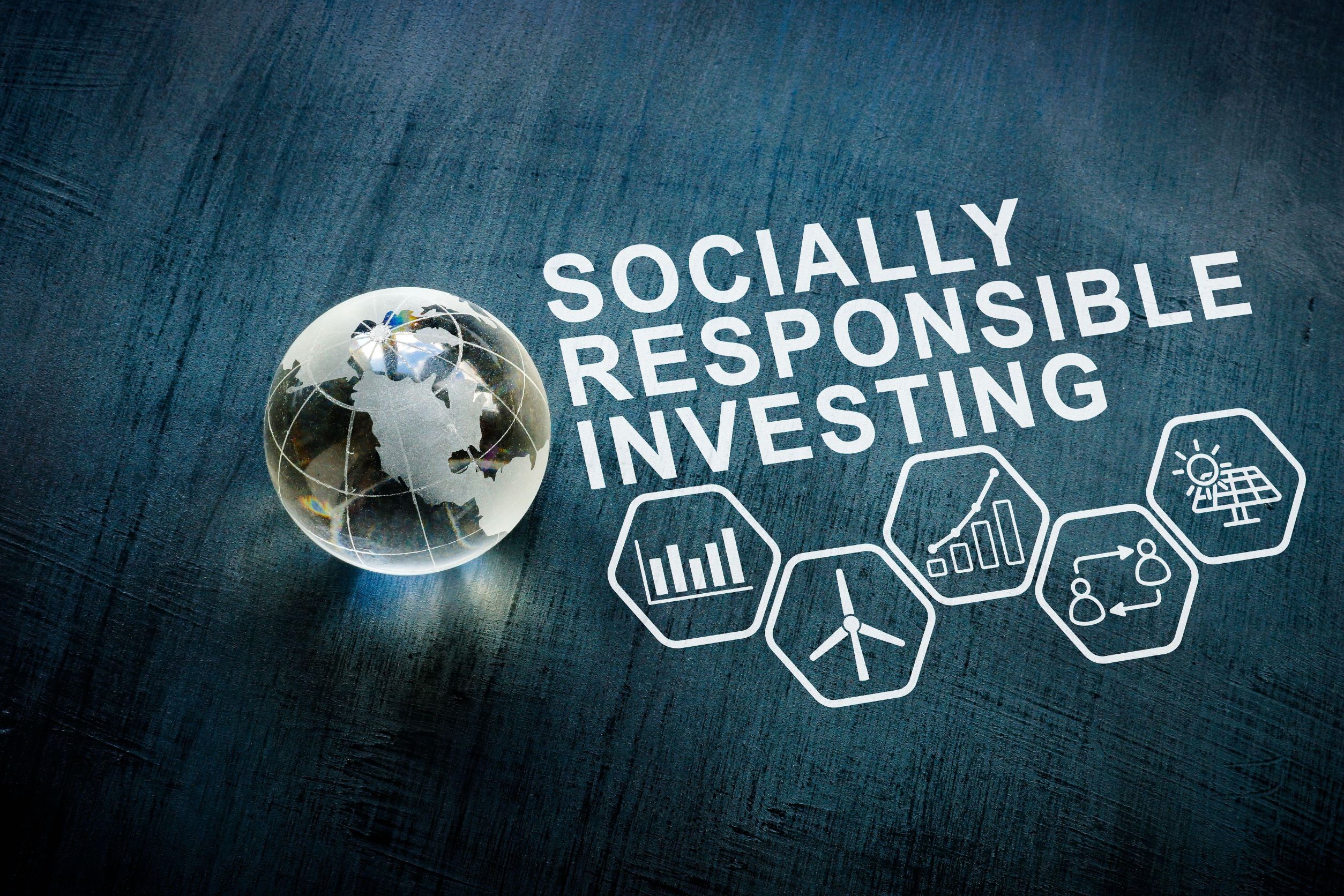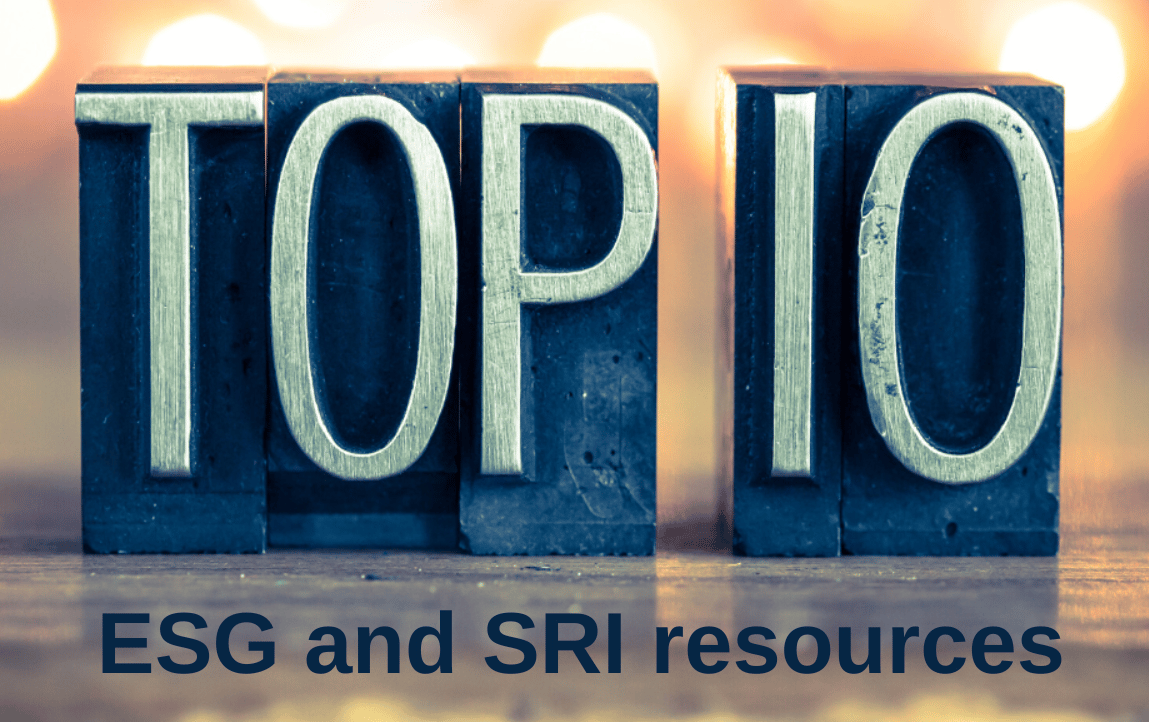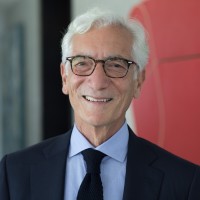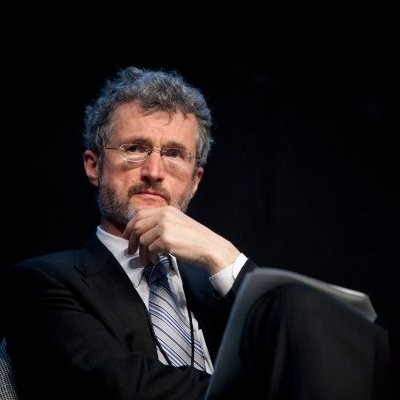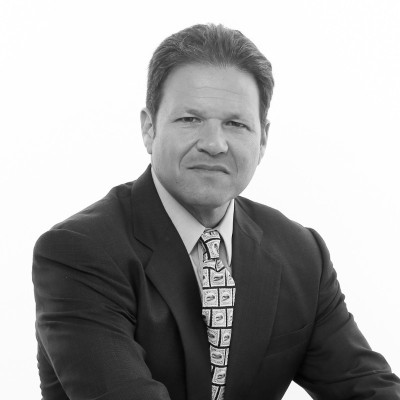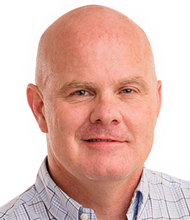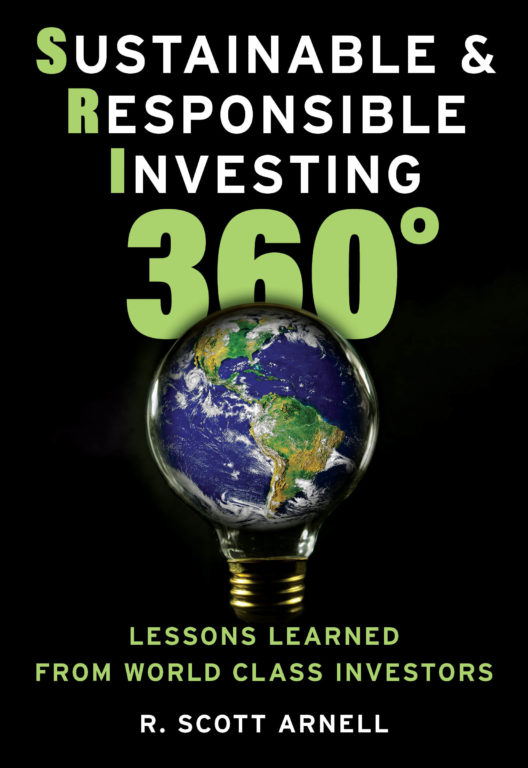
Enjoy this sample Introduction and please grab the book at one of these fine retailers! Barnes & Noble | Amazon | Apple iBooks | Books-A-Million | Indigo and more.
INTRODUCTION TO SUSTAINABLE & RESPONSIBLE INVESTING 360º
It is not the critic who counts; not the man who points out how the strong man stumbles, or where the doer of deeds could have done them better. The credit belongs to the man who is actually in the arena, whose face is marred by dust and sweat and blood; who strives valiantly; who errs, who comes short again and again, because there is no effort without error and shortcoming; but who does actually strive to do the deeds; who knows great enthusiasms, the great devotions; who spends himself in a worthy cause; who at the best knows in the end the triumph of high achievement, and who at the worst, if he fails, at least fails while daring greatly, so that his place shall never be with those cold and timid souls who neither know victory nor defeat.
—Theodore Roosevelt
It was nearly 2:00 a.m., somewhere in the sprawl of Mumbai, and I was bumping along in the back seat of a Kaali Peeli Fiat taxi on my way from one airport to another. I was traveling from Hong Kong to Switzerland, but my assistant had explained that the only way I could arrive in time for my Geneva meeting the next day was to change airports in Mumbai and catch a connecting flight. Anomalies like that were part of the international business life in the 1990s.
Still hot and sultry at that hour, all the windows were open in the cab because back then air conditioning wasn’t an option. As the car slowed to a stop at a traffic signal, a mob of beggars suddenly descended from the shadows and their outstretched arms reached through the windows, straining toward me.
Still in a fog from interrupted airplane sleep, I felt like I was in some kind of a Kafka-esque movie scene. I looked up at a woman clutching a baby. She stared straight into my eyes; I was possibly her only hope that night. But hers was just one gaze from a dense press of desperate faces.
Can I give money to one and not the others? It wasn’t possible to give money to all of them. I reflexively slid to the center of the car seat to position myself equidistantly from the pleading hands. The light changed and the taxi sped away, leaving those poor souls behind. But for the rest of the night, I contemplated their desperate circumstances while trying to reconcile the excesses of my own.
I’ve worked a lot in India over the years, so that wasn’t my first experience with its poverty. But the juxtaposition of that unsettling street scene, coming just hours after leaving the marble and mirrored glass skyscraper’s conference room in Hong Kong, all at once seemed surreal.
Some hours later, having flown through the night, I was back in Geneva. But the despairing eyes I had looked into earlier continued to haunt me. My world of corporate objectives seemed so distant, so disconnected from the harsh reality that most of the world lives.
In retrospect, I can now see how that night in Mumbai planted a seed of unease that gnawed at me. But a busy life has a way of drowning out introspective moments, and back then I didn’t understand those feelings well enough to articulate the questions I now ask.
What am I doing to positively impact my culture? How is my life’s work affecting the world?
Fast forward a decade or more. After a varied career at multiple Fortune 500 companies, as well as some start-ups in several industries, I founded a financial advisory company in Geneva.
In the early days we were, like many firms, occupied with advising family offices, institutional investors, and high net-worth individuals on alternative investments. Coincidentally, a few years in, I started to hear that same voice in my head:
What am I doing to positively impact my culture? How is my life’s work affecting the world?
At first it came occasionally, but later on it was louder and gained an intensity I had never before experienced.
A long career in building businesses all over the world allowed me to see that financial investments have direct consequences on people’s lives. There are many factors that contribute to the great differences between the developed and the developing economies, but the availability of capital for investment is certainly a powerful one. Yet, spending most of my time in the gilded world of European money managers, it was hard to look at my life’s work as contributing anything more than helping wealthy people become richer. I was generating alpha, and that wasn’t what I wanted to do.
Then came the financial crisis of 2008, which cast a harsh light on the inherent conflicts of interest and the end-justifies-the-means financial investment system. A lot of savvy investors and investment professionals I knew on the Rue du Rhone in Geneva became uncomfortably aware that they had invested with people who wore no moral or ethical bathing suits when the tide unexpectedly went out.
As markets ground to a halt and mandates dried up, those long-fermenting questions were now bubbling to the surface. Like many others in my profession, I was at a pivot point and felt compelled to use the opportunity to hit my pause button and rethink, reevaluate, and refocus Geneva Capital’s mission. I wanted to develop a business model for my company that was more holistic and more aligned with my values.
After a lot of soul-searching, I became determined that we would be led by a vision to mobilize capital into investments that would help create a better world for our children and future generations. But I qualified our mission by specifying that we’d strive to become the leading investment advisory firm enabling competitive, high-performance financial returns through sustainable, socially responsive, impactful investing.
In hindsight, articulating that vision turned out to be the easy part. While socially responsible investing was once again starting to trend, this time around it came with a twist: that for the sake of doing good, investors should be willing to accept lower financial returns. There was the usual overhyping, followed by skepticism and backlash.
Nevertheless, over time, responsible investing successfully entered the mainstream. Today people are increasingly rejecting the idea that their business and financial investments are mutually exclusive from charitable and social justice goals.
That’s why I refocused Geneva Capital as a solution to these problems. We only offer advice and assistance on companies, impact projects, and investment funds that have some kind of positive social or environmental impact—plus competitive or superior market rates of returns.
Assets under management invested in responsible investments have exploded. Nevertheless, there continues to be a great deal of confusion about how responsible investing is practically executed. There’s little agreement on how to measure the social impact of these products, and investors also have trouble finding scalable investment deal flow. I’ve spoken with many people in different stages of implementing a sustainable investing platform who struggle to articulate and execute such a strategy.
When I was first approached to write this book, my initial thought was, “Does the world really need another book on investing? Is there anything really new to say?” As it turns out, because of the evolutionary state of sustainable investing and the relative naissance of that market, there is plenty to be said that’s new. But I’m not the person to say it. I’ll leave that to the qualified experts and brilliant innovators who are out there every day charting new waters and blazing new trails.
My goal with this book is to create a set of virtual advisors for anyone attempting this journey. To the extent that’s it’s possible, I also want to shed light upon and democratize responsible investing. I want to share tactics and solutions that were previously only used by professional investors with extensive experience and great resources at their disposal.
Inevitably, the journey to sustainable investing is different for each investor. But I hope you will find principles here that will help you more clearly define your road map to execution. Ultimately, my objective is to empower individual as well as professional investors to deploy capital in a more sustainably life-giving way.
I am not writing this book as any kind of thought leader or self-anointed expert. If I have learned anything that has allowed me to have any success in my career, it’s how much there is that I don’t know. I don’t have the answers, but I do have plenty of questions, and I took the opportunity to ask them of professionals with years of experience in this arena. They’ve pushed themselves, experimented, tried, failed, grown, and ultimately succeeded. Not all of their insights will be applicable to your particular situation. But perhaps some principles or nuggets of wisdom from their journey will help you along the path of yours.
These days there is much fanfare and bluster around sustainable investing. But in the end, it’s the people who are mobilizing capital into worthy investments that are changing the world for the better. Clarifying your values and finding your true purpose in life is a worthy achievement. If you can then align those with your financial investments, it will allow you to not just embrace those ideals, but live them on a daily basis—while positively impacting the rest of the world, for generations to come.
My intention was to create this book in easy-to-navigate stand-alone sections. You can consume it from beginning to end or turn to a specific topic of interest. The first part of the book offers a basic overview of Socially Responsible and Sustainable Investing. There you’ll find selected definitions used throughout the book, and a high-level summary of the advantages and challenges of different investment approaches.
The remainder of the book is devoted to interviews with different professional investors, and those are presented in sections organized by various types of investment focus and investor class. Each interview is intended to be a conversation with someone who has proven their know-how, has plowed new ground, and can explain the why behind their investment approach.
By sharing their knowledge and experiences through accessible and thought-provoking dialogue, these investors and company leaders can benefit both new investors and seasoned professionals looking to expand their investment horizons. Together they offer a collective vision for building sustainable profits, while creating better communities throughout the world.
###
Sustainable & Responsible Investing 360º is available at Barnes & Noble | Amazon | Apple iBooks | Books-A-Million | Indigo, and more.

